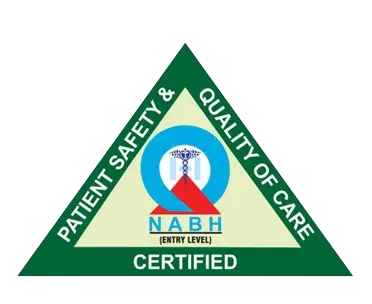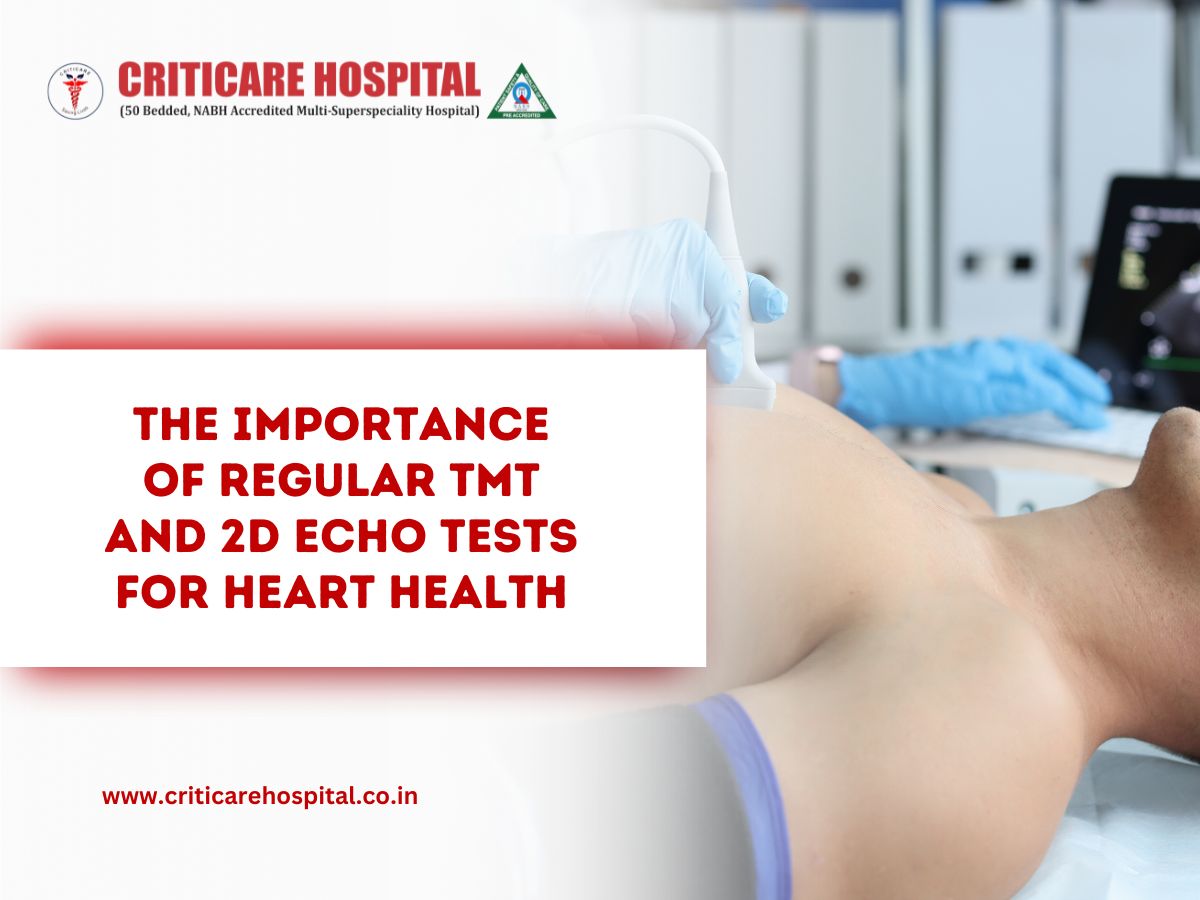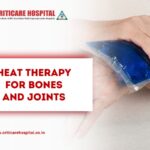Heart and blood vessel diseases across the world are among the causes of ill health, disease, and death. There is growing alarm in India over increasing cardiovascular disorders due to lifestyle, genetic predispositions, and ageing. A mere common man is conscious of chest pain or any other sign of cardiac trouble, i.e., shortness of breath. There is no consideration put into preventive medical examinations for healthy hearts, though. Some of the most important investigations conducted to diagnose any heart disease on time include a treadmill and 2D echocardiography. Both are non-invasive and easily done procedures that will give crucial information about the working of the heart, which may save one’s life.
What is TMT?
The Treadmill Test or Exercise Stress Test is used to determine how the heart of a patient works under stress. Particularly, during imaging, the patient is on a treadmill being observed by a clinical expert. Heart rate, in addition to blood pressure, is measured during the test, and an ECG is taken for the evaluation of how the heart performs with the increased level of physical exertion. Most importantly, while performing TMT, understanding how the heart responds to increased physical demand and thereby diagnosing
- Coronary Artery Disease (Cardiac Ischemia): This is where the blood vessels that bring blood to the heart are blocked or narrowed and may lead to heart attacks. TMT identifies this illness in its early stages.
- Exercise-Induced Arrhythmias: Unusual heart rhythms show only when the heart is stressed or its level of exertion is high, in high-intensity activity, and TMT registers them.
- Cardiac Function: The purpose of this test is to measure the work output of the heart during exercise to check on those diagnosed with a trace of heart disease.
- Recovery Time: Just how fast or slow your heart rate returns to normal after exercise is a good indicator of heart health.
What is 2D Echocardiography or 2D Echo?
The 2D Echocardiogram, also called 2D Echo, is an ultrasound technique that records what is happening inside the heart. These pictures are highly exhaustive and not only explain the structure of the heart but also the operation of the heart. It looks at the magnitudes, forms, and properties of the chambers and valves of the heart. For instance, 2D Echo can be used in:
- Heart Valve and Chamber Visualization: To check if valves are working properly or if there is any leakage, stenosis (narrowing), or any other abnormality.
- Heart Function Evaluation: To evaluate whether the heart is pumping blood properly; that is, pumping failure caused by the heart is failing.
- Determining Congenital Heart Defects: A 2D echo finds structural defects in the heart since birth, such as holes in the heart and abnormal valve development.
- Assessment of Blood Flow: Using Doppler imaging, the 2D echo examines the blood flow through the heart to detect any abnormal flow pattern that might suggest clots or blockages.
Need for Periodical TMT and 2D Echo Testing
Both the TMT and 2D Echo tests are very important: they contribute important information about the heart and propose solutions to possible problems in preventing them from becoming fatal. Here is the reasoning for why the tests are considered to be the cornerstones of heart health:
-
Early Diagnosis of Heart Disease
One of the greatest advantages of TMT and 2D Echo is early diagnosis. Quality heart diseases generally exhibit a silent mode; henceforth, chest pain, shortness of breath, or some severe sign embosses itself suddenly. Coronary artery disease can grow for many years with barely any noticeable pain in the chest or other alarming signs suddenly presenting themselves. The presence of collar discomfort and shortness of breath might just mean that the ischemia-causing disease is already in the late-stage process.
Early detection of arterial narrowing, valve dysfunction, and aberrant rhythms through regular TMT and 2D Echo examinations prevents myocardial infarctions and other deadly complications. With early findings comes early intervention-with either medical procedure or lifestyle change-which greatly improves prognosis.
-
Preventive Health Strategy
Prevention would be the best cure if the health conditions had been allowed to arise or develop. Screening for heart health would then constitute a very major preventive health measure. Being subjected to TMT and 2D Echo testing, patients could be detected to show some very early features of heart disease in terms of either certain changes in heart functioning or even changes in flow, which before may have gone undetected. Timely intervention would preclude the patient from undergoing further drastic measures like angioplasty and bypass surgery.
Periodic screening is recommended for patients with a family history of heart disease or patients with diabetes, hypertension, or hypercholesterolemia. Early detection of such predisposing conditions and treatment with drug therapy, lifestyle modifications, or even supplementation may decrease a person’s chances of myocardial infarction and stroke.
-
Monitoring Existing Heart Conditions
For patients who have suffered from cardiac disease in the past, regular TMT and 2D Echocardiographic examinations help in monitoring the progression and treatment of the disease; people who have undergone cardiac surgery or stenting might benefit from similar tests to monitor heart function at an optimal level. The tests:
- Assess the pumping ability of the heart.
- Assess the valves’ performance.
- Assess how the heart performs in exercise, and
- Detect complication formation.
-
Considering Individualized Treatment
With the analysis of cardiologists over the TMT and 2D Echo test results, the treatment can become more specifically targeted. If TMT indicates arrhythmias provoked by exercise, then the doctor might medicate or even perform certain interventions to maintain a steady heart rhythm on exertion. If 2D Echo reveals structural abnormalities of the valves, surgical repair of the valves or medical management for symptom relief and diminution of further damage may be the proposed treatment.
-
Improvement of Quality of Life
Undiagnosed cardiac ailments, in most cases, can hamper an individual’s quality of life, as such individuals cannot be extremely active, get tired very easily, or get increasingly admitted to the hospital. Such tests will then help to identify them before they become a great sorrow. By early identification of conditions and the application of appropriate measures, people can sustain an active life with minimal interference from heart ailments.
When Should You Undergo Testing for TMT and 2D Echo?
How often you should get tested varies from person to person, according to individual risk profiles and medical history. For persons who do not bear a history of cardiac illness and thus carry a low cardiac risk, an occasional periodic screening every two to three years, after the age of 40, is considered sufficient. However, persons who have risk factors in place, such as high blood pressure, diabetes, cholesterol, or a family history, may need more frequent screenings, that is, annually or semiannually.
Discuss with your healthcare provider when an analytical screening program may be the best among the different possibilities, depending on your health profile.
Conclusion
In conclusion, TMT and 2D Echo help immensely in detecting, monitoring, and managing cardiac conditions, usually at a very early stage. Issues in the heart that might not appear symptomatically can often be detected through timely screening, allowing for early intervention and better long-term prognosis. If somebody is concerned about his, her, or another’s heart health and is either at risk or at a conditioned risk of developing an increased level of cardiovascular events, these tests form a good step towards a healthy heart and thereby a better quality of life.
At Criticare Hospital, we offer advanced diagnostic services of 2D Echo and TMT, together with personal care from our experienced cardiologists. Do not wait for the symptoms; go for your heart check-up today through screening and preventive care. The heart certainly deserves this!




